IPL Photofacial: All You Need to Know
IPL is a popular form of laser resurfacing skin care, even though it’s not technically a laser. Here’s all you need to know about the unique traits of the IPL photofacial.
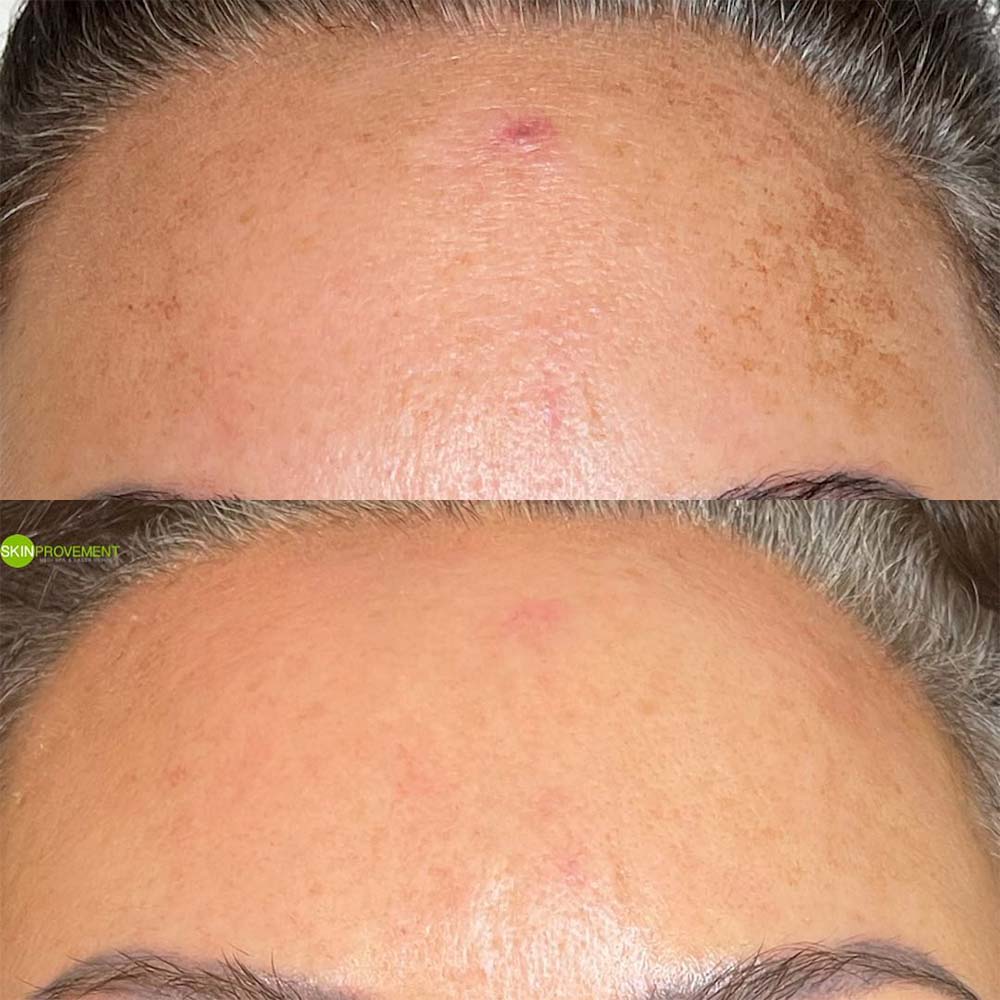
Image source : PMUhub
Explore more laser treatment topics:
IPL, which stands for Intense Pulsed Light, is a subtype of laser skin care. It’s also known as photofacial, photorejuvenation, IPL rejuvenation, and BBL (Broad Band Light).
Technically speaking it’s not a laser, but a precision light generator. Still, it gets grouped into the same treatment family because they’re applied to the same medical and esthetic concerns.
Specifically, a photofacial can be used to relieve various types of hyperpigmentation, rosacea, different types of sun damage, acne and acne scars, vascular lesions, and some textural issues.
Here’s all you need to know about it.
How Does IPL Work?
IPL works similarly to lasers in that it targets an area of skin with controlled light. The difference is in the form the light takes.
Lasers use a steady beam of a single, highly focused, wavelength. By contrast, a photofacial procedure uses short pulses of light, encompassing a broad spectrum of wavelengths all at once. This is the origin of its other name, Broad Band Light Therapy (BBL).
There are two benefits to exposing the skin to various wavelengths at the same time: pigmentation correction and collagen production.
Light of varying wavelengths affects both melanin (brown pigment) and hemoglobin (red pigment). Basically, they absorb excess pigments out of the skin to achieve an even tone and smooth complexion.
In another similarity to lasers, IPL stimulates collagen production, but to a lesser extent. This means the changes in skin texture that can be achieved with a photofacial treatment are more subtle than those of laser skin resurfacing.
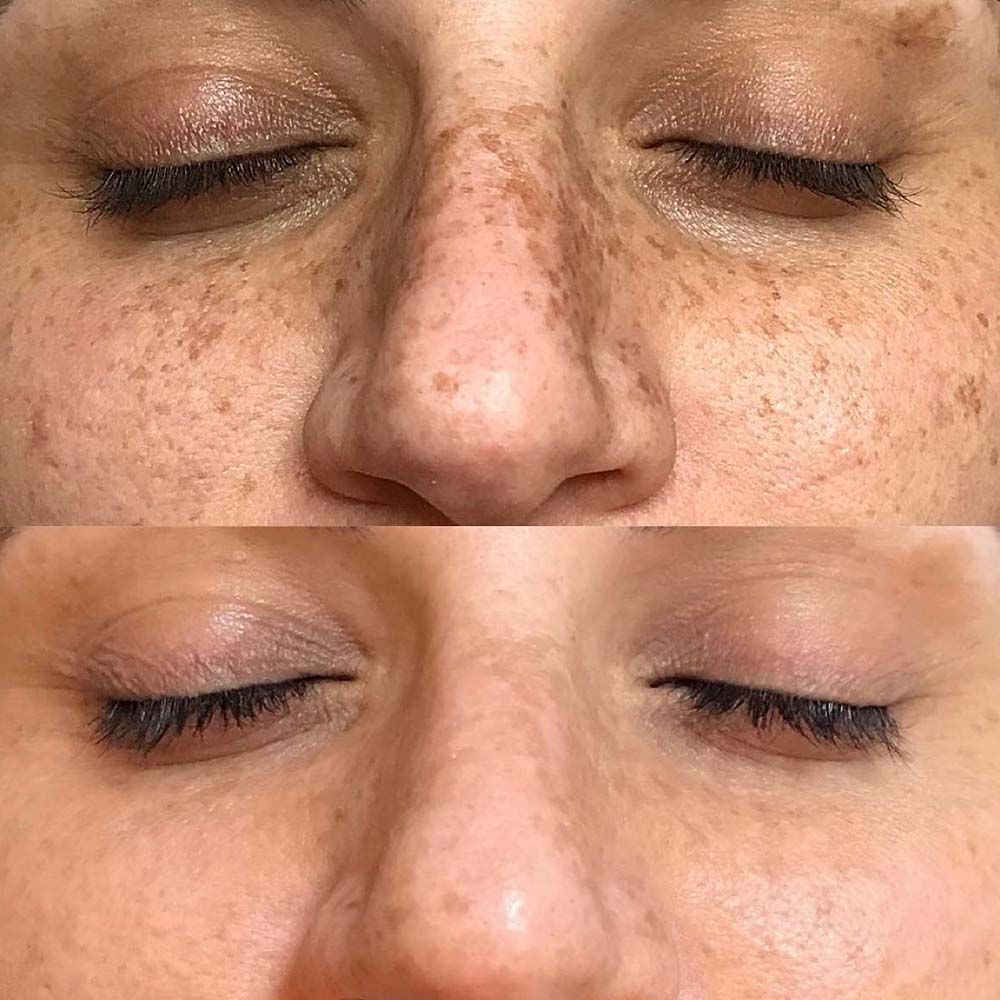
Who Is a Candidate for an IPL Photofacial?
You might be a suitable candidate for the treatment if you struggle with pigmentation issues, mild to moderate facial scarring, marks of sun damage, or certain vascular lesions.
People might consider a photofacial to address a wide range of skin issues, medical and esthetic alike.
Keep in mind that IPL is not meant to treat intense or severe skin conditions. If you have deep scars, notable wrinkles, severe vascular lesions, etc. you might benefit more from proper laser treatments, such as CO2 laser resurfacing.
Consult with both your dermatologist and IPL technician. They can assess the condition of your skin in general as well as in the area you wish to treat and recommend you the best course of action for your particular circumstances.
IPL rejuvenation is the most effective on untanned skin, and people with naturally fair complexions are better suited than people who are naturally tan or dark-skinned.
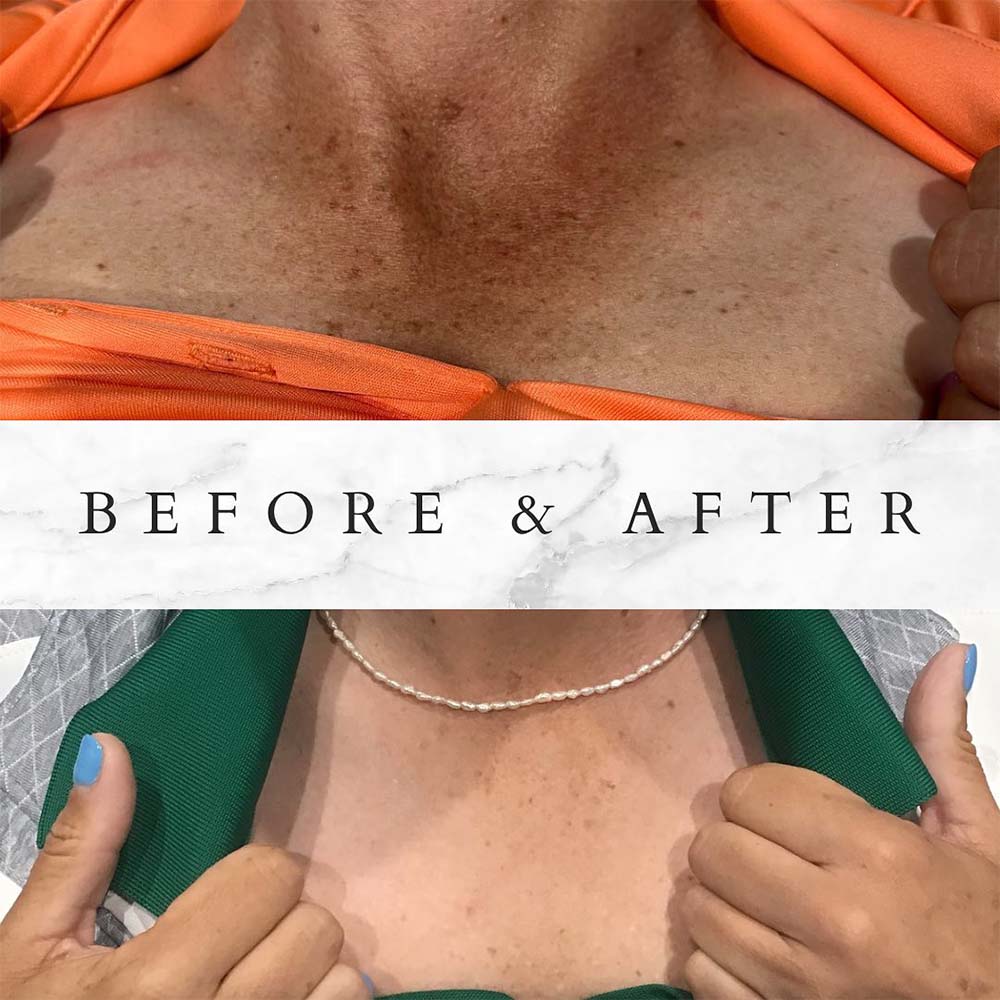
Is an IPL Photofacial on Dark Skin Safe?
People with naturally dark or tan complexions are not ideal candidates for this type of skin care, due to the high melanin content in their skin cells.
Generally speaking, if your skin type is anywhere from III to VI on the Fitzpatrick scale, you might want to rethink it.
That’s not to say that dark-skinned people are automatically excluded from IPL treatments, but there is a higher risk of side effects.
In particular, there’s a chance that their natural pigment production could change after treatment, resulting in hyper- or hypo-pigmentation.
Naturally dark-skinned people are also generally more susceptible to keloid scarring. Since IPL functions by stimulating collagen production, it could trigger keloid formation.
In some cases, skin resurfacing with either lasers or IPL devices might not be the way to go.
If your dermatologist, IPL technician, and/or laser treatment provider determine that resurfacing procedures are too risky for your skin type, they might recommend alternative approaches to getting the same effects.
Popular treatments that are great alternatives to lasers and IPL include microneedling and nanoneedling. Both are types of collagen induction therapy. They work in basically the same way as laser and IPL treatments, but without interfering with your pigment production.
Who Shouldn’t Get an IPL Face Treatment?
Although it can help with a variety of issues, IPL skin care isn’t always the best idea. There are some factors that might make you an unsuitable candidate for a rejuvenation treatment:
- Naturally very dark skin tones
- Tanned skin (via sunlight, artificially, or self-tanned)
- Recent sunburn
- Deep wrinkles
- Deep or severe scarring
- Active acne
- Severe rosacea
- Pregnancy and nursing
- Ongoing therapy with blood-thinning medication
- Recent therapy with Accutane (within the last 6 months)
When you go in for your consultation, it’s essential to be completely honest about your recent and general medical history. You should also disclose any current medication regimes, any supplements you might be taking, sensitivities, allergies, etc.
Your provider will probably also ask about some aspects of your lifestyle that might be relevant to the procedure. They need all of that information to accurately assess any risks and plan your treatment options.
What Conditions Is IPL Rejuvenation Used For?
IPL rejuvenation is used to treat various skin conditions that aren’t severe enough to warrant full-blown laser resurfacing. Before you commit to treatment, consult with your provider as well as your dermatologist.
They’ll assess your skin condition in the problem area, as well as in general, and ascertain whether a photofacial is the best choice for your condition and skin type or if you might benefit more from another type of procedure.
IPL for Sun Damage
Sun damaged skin in general features an overabundance of brown and/or red pigment (depending on skin type, length of exposure, and other factors). As we mentioned, the varying frequency of IPL targets both melanin and hemoglobin.
By exposing the sun-damaged skin to the broad-spectrum light, it’s stimulated to absorb and eliminate the unwanted pigments. The result is even-toned, rejuvenated skin with a smooth, balanced appearance.
IPL for Sun Spots
The mild to moderate spots of discoloration that happen due to sun damage can be greatly reduced, or even completely eliminated, by an IPL photofacial.
Depending on the intensity and spread of the spot, you will likely need a few treatments. Most people need 4-6 sessions, but this varies between individuals.
IPL can treat sun spots on the face, neck, and chest, and they usually don’t come back after treatment. That said, continuous sun exposure is likely to trigger the appearance of new spots, so you might need further treatments in the future.
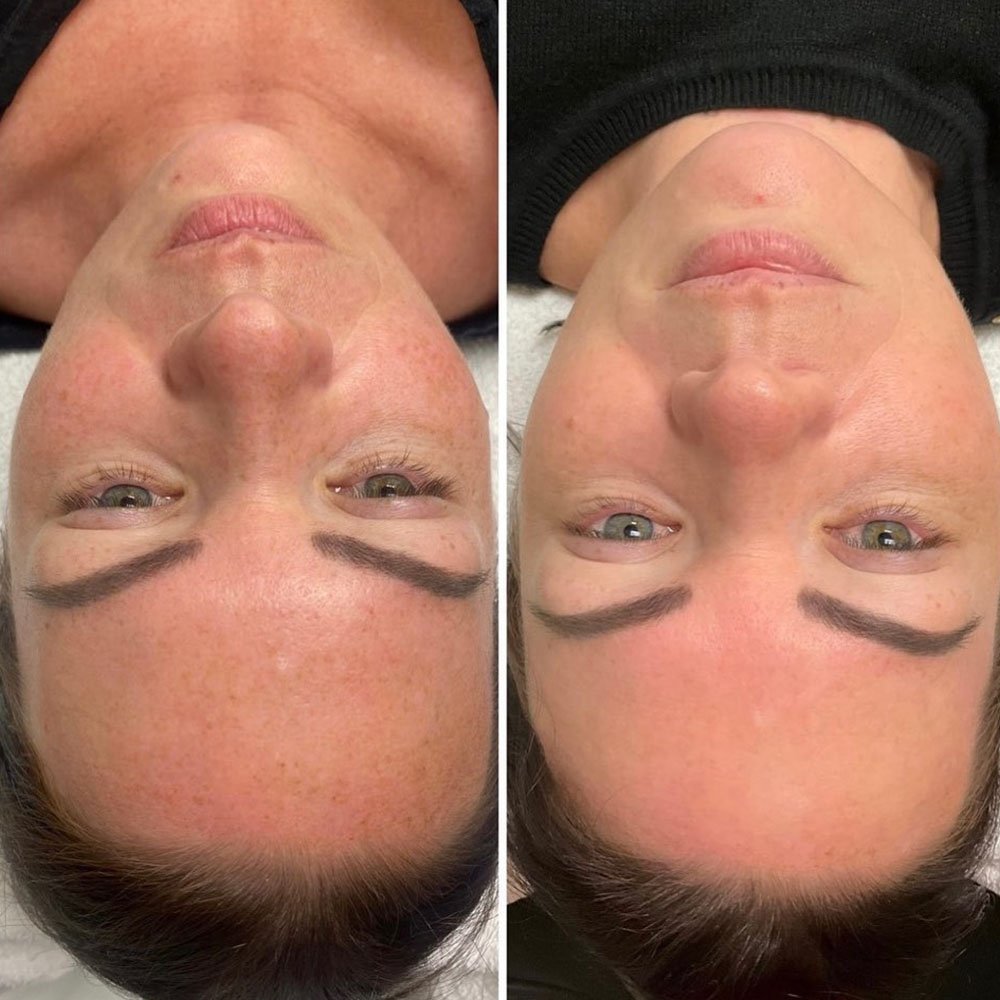
IPL Laser for Dark Spots
Dark spots mostly refers to excessive localized brown pigmentation, but can also mean intense spots of redness, or general blotchiness of the skin. These can be removed by a photofacial with little to no side effects.
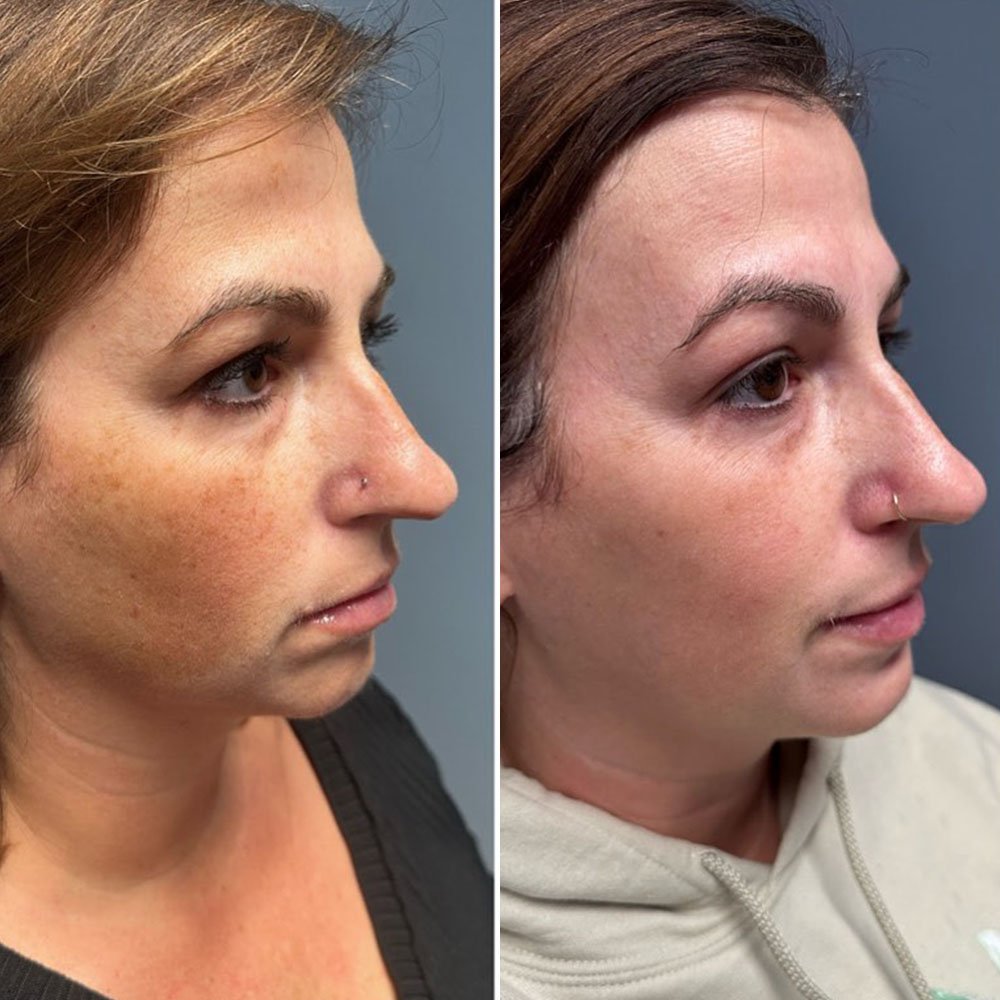
NOTE
Keep in mind that a common side effect of treating dark spots with an IPL rejuvenation is that the ones closer to the surface of the skin will darken immediately after treatment.
This is normal and not a cause for concern. The darkened superficial spots flake off after around 1-2 weeks and take the excessive pigment with them.
IPL for Age Spots
Age spots are small areas of discoloration that usually appear on the hands as we age. They’re typically brown, red, or purplish, which earned them the nickname liver spots. Though they aren’t dangerous, they can look unappealing.
Exposing age spots to Intense Pulsed Light has a double effect. Firstly, the pigmentation molecules in the area are broken up so the skin looks brighter and more even.
Secondly, the boost in collagen and elastin production tightens the skin and makes the hands look more youthful.
Since IPL includes different wavelengths of light, the treatment can be tailored to each patient’s skin type, skin tone, and specific pigmentation of the spots.
IPL for Hands
Intense Pulsed Light can be applied to hands 1 and arms as well as the face or neck. It’s mostly done in order to rejuvenate hand skin that shows signs of aging, this includes wrinkled, sagging, thin skin, as well as age spots a.k.a. liver spots.
Photofacial for Melasma
Melasma is a facial pigmentary disorder that can be triggered by UV exposure or hormonal changes (e.g. from pregnancy or birth control). It can be challenging to treat, and IPL tends to give mixed results.
Some studies suggest that photofacial rejuvenation is useful in treating it, but mostly as a supportive, rather than primary, form of therapy.2
On the other hand, there’s a risk of having the opposite effect, especially in dark-skinned individuals.
The wide pulses of light work by heating up the pigments in order to break them down. The trick is that the heat spreads to the surrounding tissue as well.
That can actually boost melanin production and trigger post-inflammatory hyperpigmentation in the areas surrounding the treated spots, which then might develop melasma despite not having it pre-treatment.
In general, IPL might improve melasma in the short term, but there is high risk of relapse.
IPL Photofacial for Acne
Photofacials can be used in acne treatment to great effect. It works by heating up the hair follicles that got clogged with skin cells and oil. The heat breaks down the clogs and destroys the surrounding bacteria, dismantling the acne from within.
IPL has been shown to reduce the number and spread of acne by around 50% after 4 treatments.3 Most people require 3-6 sessions, spaced about a month apart, to achieve the results they want.
Since everyone’s skin is different, you should consult with your dermatologist and IPL tech about the specific number and timing of treatments necessary in your particular circumstances.
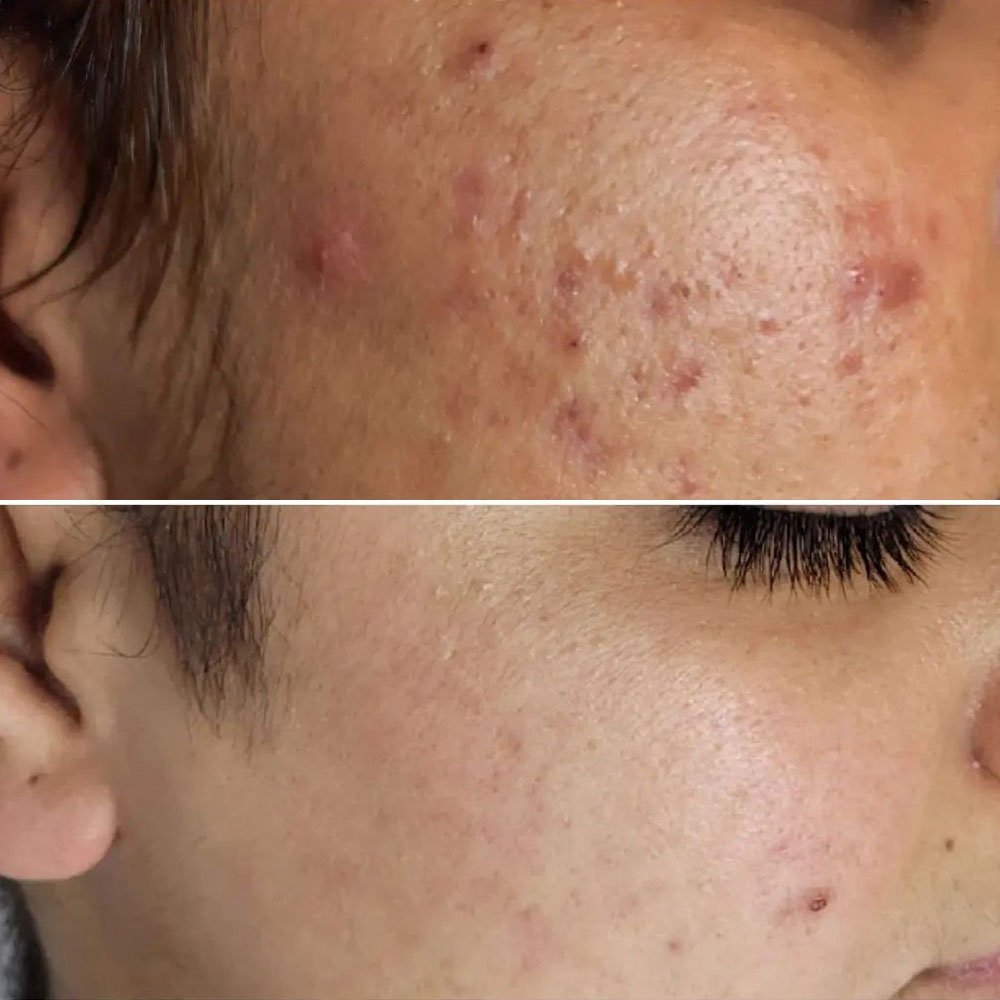
IPL Scar Treatment
IPL is sometimes used in scar revision treatments. In these scenarios it’s typically referred to as BBL (Broad Band Light). It can be applied to keloid and hypertrophic scars which occur due to acne, burns, trauma, or surgery.
Depending on the size and severity of each individual scar, IPL/BBL can achieve good results. In particular, it can dramatically reduce the height, hardness, and redness of the scars.
Photofacial for Acne Scars
In terms of treating acne scars, IPL is more of a cosmetic than a medical solution. It does have a positive effect on their appearance, since it lightens and evens out the skin tone, therefore making the scars far less noticeable.
However, because the collagen induction from IPL is weaker than from standard laser treatments, it doesn’t do much to erase the scars themselves.
It might lessen very shallow ones, but ice pick scars and other indented forms would benefit more from laser resurfacing or microneedling.
IPL for Facial Redness
A surplus of red coloration in the face can happen for a number of reasons. It could be due to naturally excessive pigmentation, in which case an IPL facial can help target the overproduced hemoglobin.
Otherwise, facial redness might be due to damaged capillaries, overly pronounced veins, or conditions such as rosacea. A photofacial treatment can contribute to managing the related esthetic concerns.
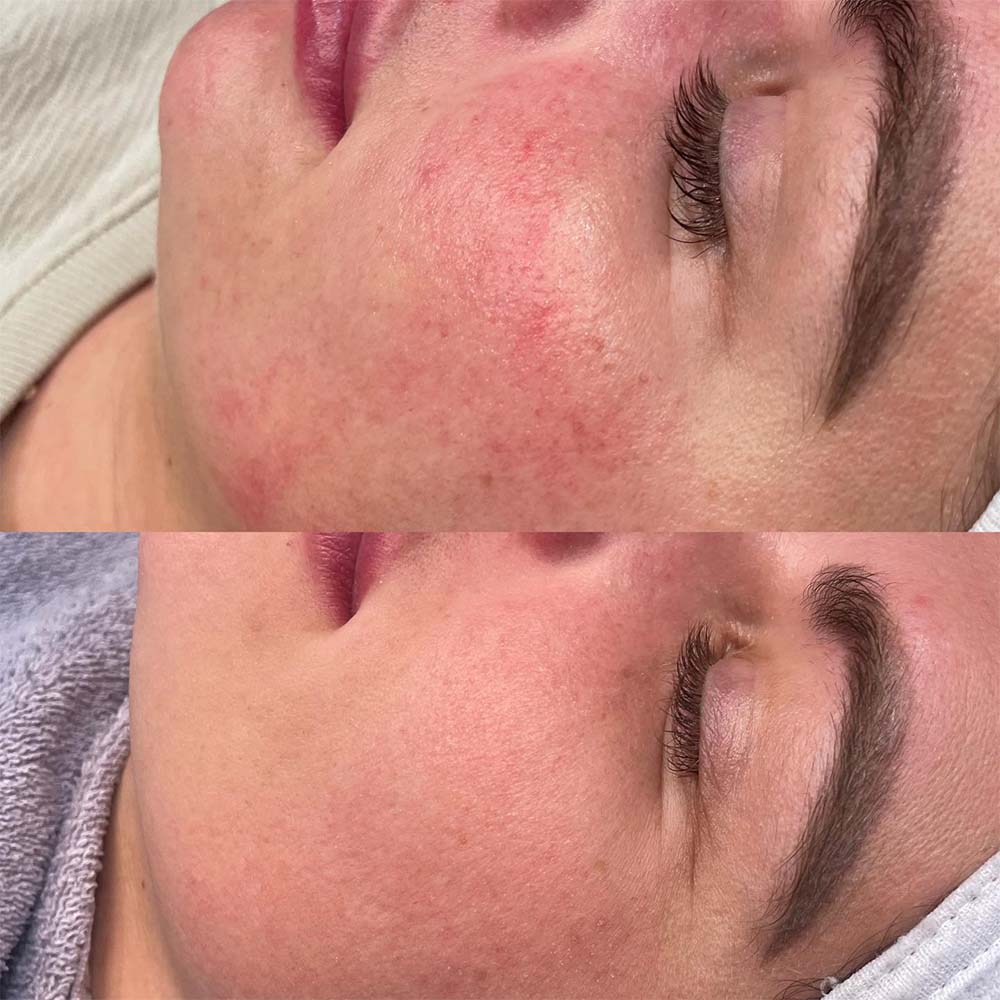
IPL for Broken Capillaries on Face
Broken capillaries actually means capillaries that became visible on the surface of the skin because the collagen and elastin in the capillary walls and the dermis layer of the skin became weakened.
It commonly happens due to sun exposure, but can also be triggered by hormonal changes, rosacea, skin trauma, etc.
IPL, having a collagen induction effect, is therefore a good option for treating facial broken capillaries.
By targeting the hemoglobin in the exposed blood vessels, the heat energy from the pulsed light makes those vessels shrink and close. Combined with the mild boost in collagen production, the capillaries eventually disappear.
However, IPL therapy is effective only on capillaries that are 2 mm or less in diameter. Larger vessels will require more intense, specifically directed treatment, such as a laser, an injection, or diathermy (targeted heating by electric current).
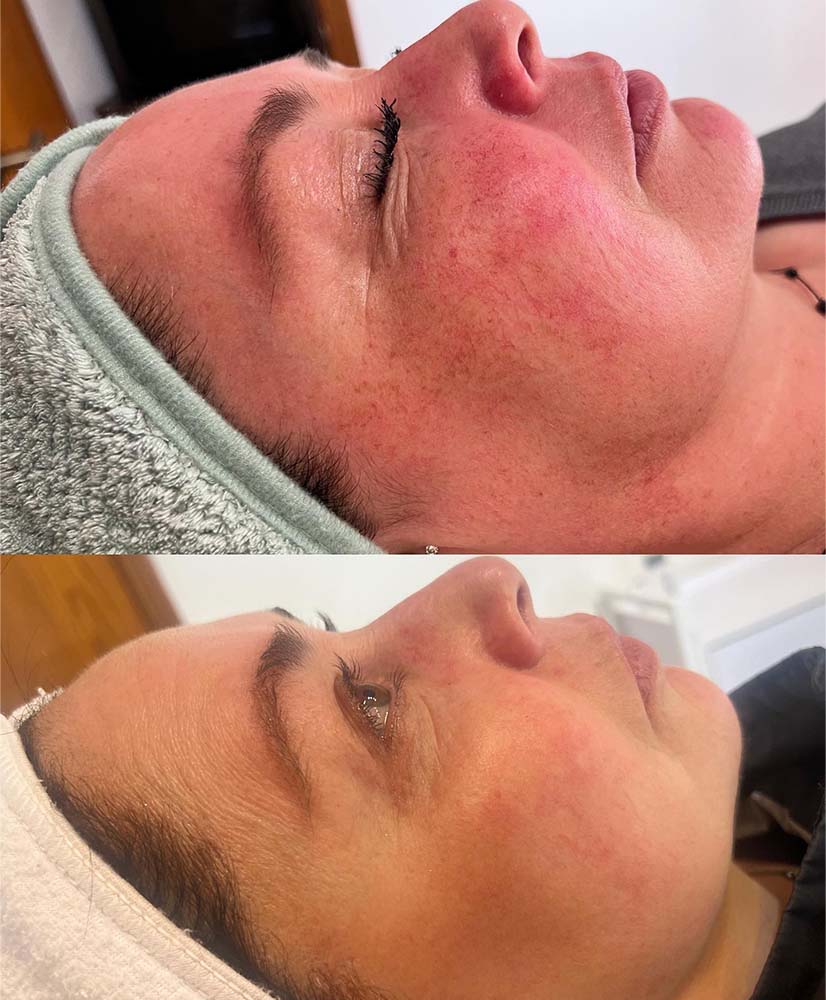
IPL for Rosacea
IPL treatments don’t actually cure rosacea – as of the time of writing of this guide, there is no known cure for it – but they can greatly improve the symptoms of the condition which include excessive redness, visible blood vessels, pimples, bumps, and uneven skin tone.
IPL is effective in treating these symptoms because the wavelengths of the light can be adjusted to target various skin depths. Depending on the baseline condition of the skin, facial rosacea can be cleared up with up to around 78% efficiency.
IPL for Spider Veins on Face
Spider veins on the face are usually associated with excessive sun exposure. They might also be caused by rosacea, skin diseases like scleroderma or lupus, or even in reaction to steroid medications.
IPL treats red spider veins, thanks to its ability to precisely target hemoglobin. Due to the localized heat from the light waves, the walls of the vessel collapse and the spider vein is reabsorbed into the body.
If a person’s spider veins are blue, they typically benefit more from other forms of treatment, like sclerotherapy (chemical injection).
Spider veins on the body can be considered a diminutive form of varicose veins. If allowed to progress unchecked, spider veins on, for example, the legs, can actually progress into full varicose veins. Then they’re no longer a cosmetic problem but a genuine medical issue.
IPL Side Effects and Risks
Since it works in a way that’s much milder than traditional lasers, IPL side effects are also quite rare and minimal in severity. Still, that doesn’t mean that they don’t exist. Potential complications include:
- Pain
- Burns
- Excessive redness
- Blistering
- Swelling
- Overstimulated hair growth
- Hyper- or hypopigmentation
- Whitened hair in the area
- Crusting
- Scarring
- Keloid scarring
- Eye damage
- Blood clots
- Infection
The greatest risk comes from subjecting yourself to a treatment performed by an untrained technician. During your consultations, address any questions or insecurities you may have. Always take your time to research every provider, their credentials, expertise, formal training, any specialization, years of experience, and specific area of practice.
How Long Does Healing After an IPL Facial Take?
In general, though, most IPL rejuvenation procedures will require a few days, up to two weeks healing time.
The timespan of your recovery after an IPL facial will depend on a number of factors:
- The type of treatment you did
- The size of the treated area
- The severity of the condition
- Your age and overall health
- Any medication you might be taking
- Your lifestyle (e.g sun exposure)
- Your natural healing rate
Your doctor and photofacial service provider will be able to give you a more precise estimate for your specific scenario.
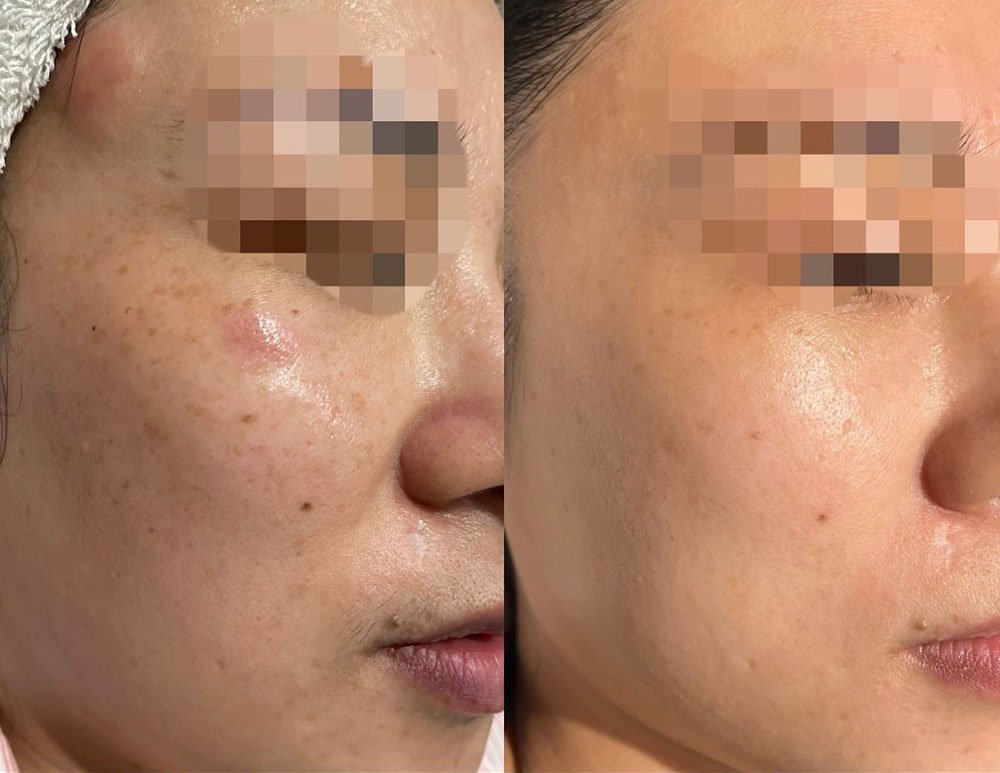
IPL Photo Facial Aftercare
Your provider will give you specific instructions on how to care for your skin after your treatment, depending on what you specifically had done. However, there are some general aftercare rules that everyone should follow:
- Keep the skin moisturized
- Use ice to relieve redness and swelling (look into ice rollers – they’re neater than ice packs)
- Clean with warm (not hot!) water and gentle cleanser
- Avoid sun exposure for a time
- Consistently apply broad-spectrum sunscreen with minimum 30 SPF
- Don’t scratch or pick at the skin until it recovers
- Avoid any facial makeup until the skin is completely healed
- Don’t use any chemical or mechanical exfoliants for at least a week
Beyond this, note down the aftercare instructions you receive from your provider and follow them religiously.
You should also consider booking an appointment with your own dermatologist. Inform them of the procedure you underwent and share what care instructions you got. Keep them in the loop with your recovery.
If anything seems to go wrong during your healing period or you feel any unexpected discomfort, your dermatologist can work with your IPL provider to assess the situation and recommend solutions.
How Much Does an IPL Photofacial Cost?
According to numbers cited by various skin care clinics across the US, the average cost of a single IPL photofacial tends to fall in the $500-700 range, though it might go as high as $1200-1500.
The cost of your photorejuvenation treatment will depend on several factors:
- The experience and credentials of your service provider,
- The size, location, and reputation of the clinic,
- The size of the treated area,
- The number of areas to be treated,
- The number of sessions required,
- The nature and severity of the condition to be treated,
- Whether you only do IPL or combine it with other treatments.
Remember that most conditions require 3 or more photofacials to achieve any notable results. There might also be additional costs to consider, such as local anesthesia, any pretreatment testing, associated medication, skin care products, etc.
These may or may not be necessary – it all heavily depends on your individual circumstances. Make sure to extensively discuss all associated costs during your consultation.
On a final note, keep in mind that IPL is generally considered a cosmetic procedure. That means your health insurance plan will likely not cover it. Talk to your chosen clinic about financing options, such as payment plans.
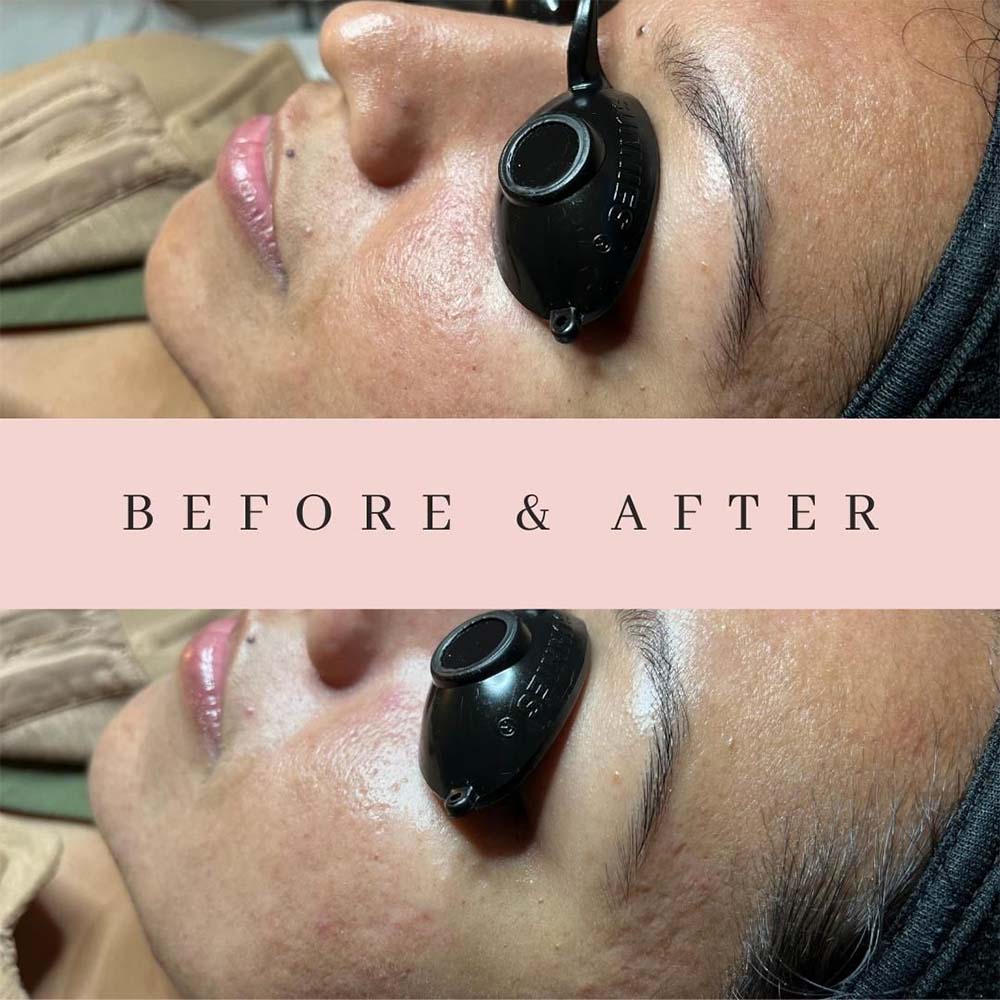
Can You Do an IPL Photofacial at Home?
If you find the average photofacial cost too high for comfort, you might be wondering whether it’s possible to do an IPL photorejuvenation at home.
Sadly, we must disappoint you on that one. There are certainly hand-held IPL devices that are meant for home use and commercially available, but they’re significantly weaker than in-salon and in-clinic precision light generators.
A DIY photofacial treatment is meant to help reduce excessive, unattractive, or unwanted facial hair growth.
You might also use at-home IPL to deal with body hair, though reports on the success of this method vary. In addition, it’s not suitable for all skin types and even not for all hair colors.
Moreover, trying an IPL photorejuvenation at home carries some significant risks. After all, you’re having your skin absorb unusually high amounts of heat and direct light energy.
If used improperly (which is easy to slip up on!) it can cause intense redness, hyperpigmentation or other discoloration, pain, blistering, oozing, crusting, and scarring. All in all, better not risk it.
IPL Photofacial – Main Takeaways
Although it’s technically not a laser, IPL photorejuvenation is used to address many skin issues that lasers also treat.
It’s much less intense, so it mostly targets superficial problems like pigmentation, acne, sun damage, signs of aging, some types of scars, and some vascular lesions in the facial area.
It’s possible to do IPL at home, but only for hair removal, and with only varying success. Genuine photofacial treatments can only be done in salons or clinics by certified, licensed, experienced technicians.
The cost, aftercare, and healing process for IPL heavily vary between individuals. Insist on detailed consultations with your service provider. They’ll need to assess your skin type, natural pigmentation, specific issue, and other factors that will determine what course of treatment is the best for you.
weekly insight into PMU insdustry
Subscribe to our FREE newsletter. 100% good stuff.

support us so we can keep providing you with free education , information and inspiration.
